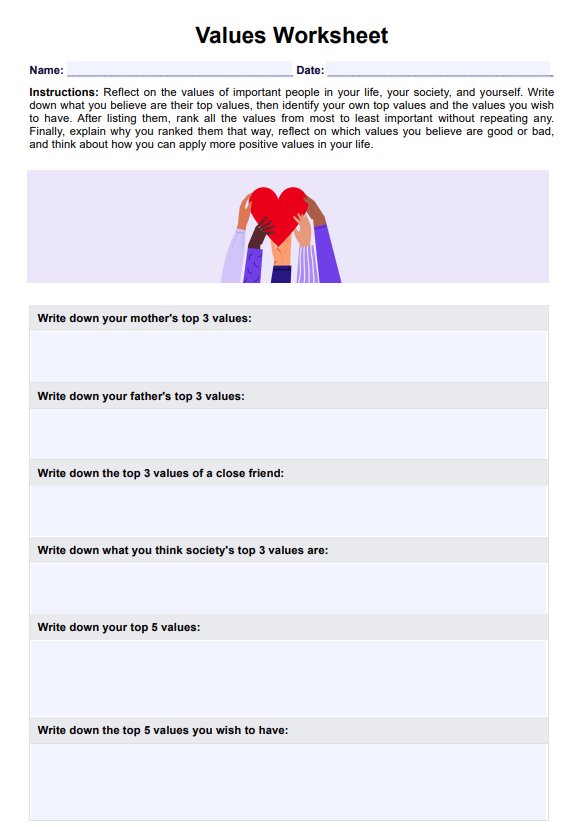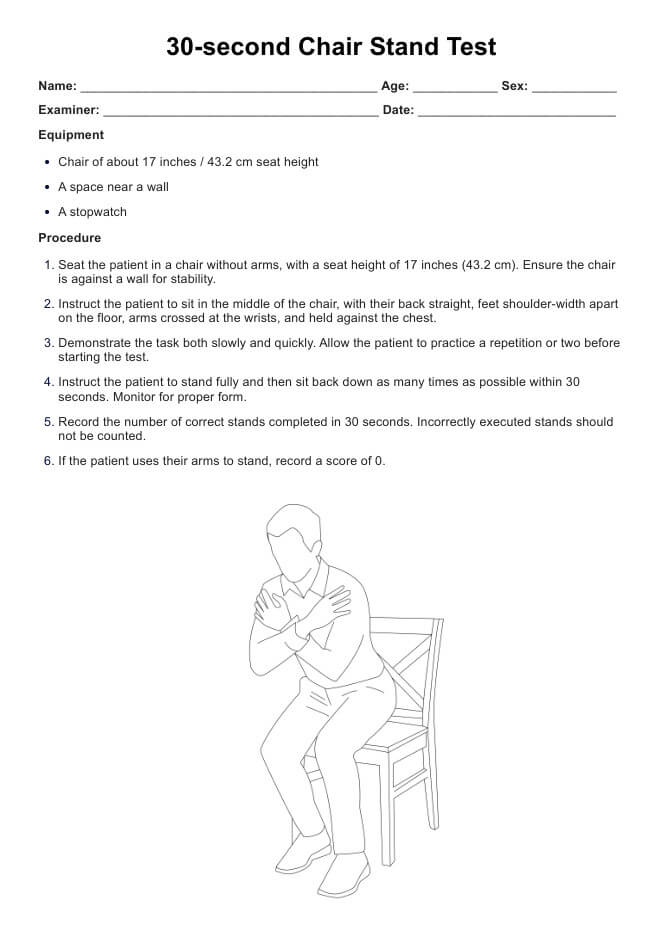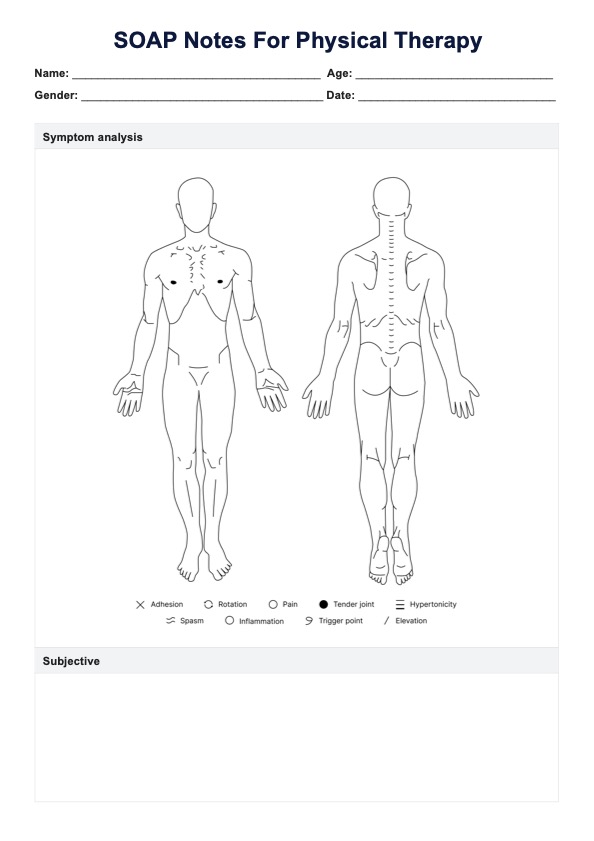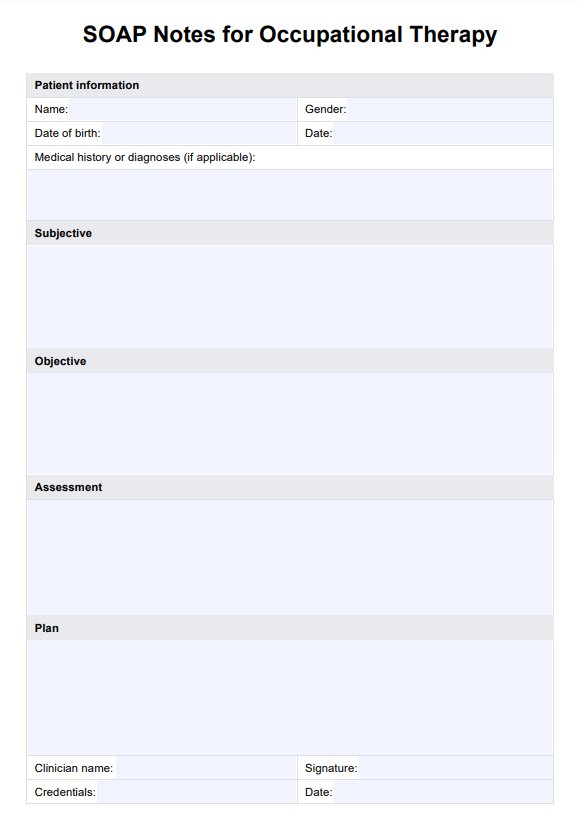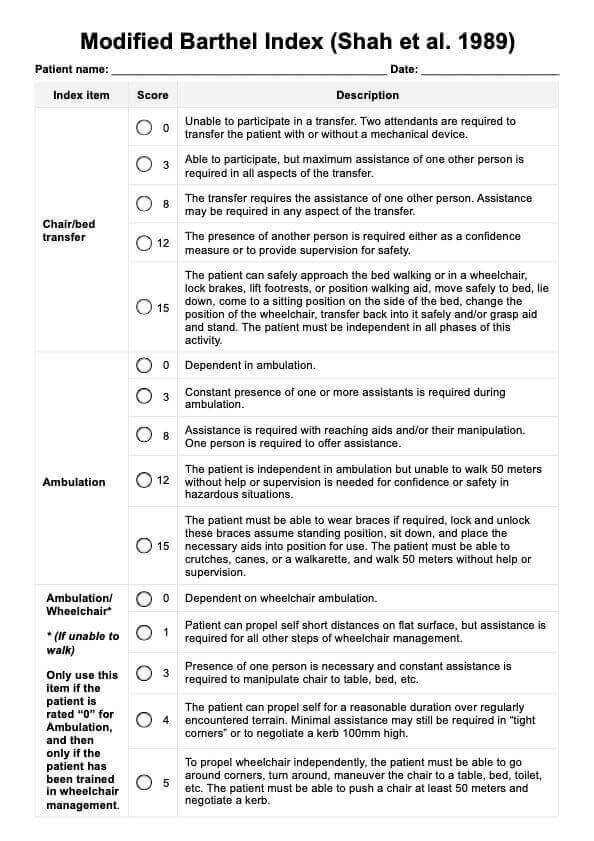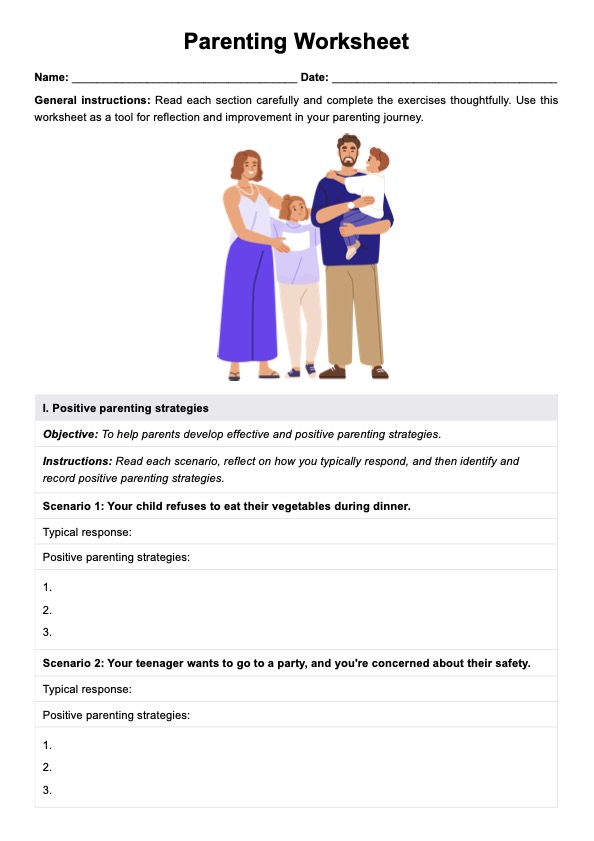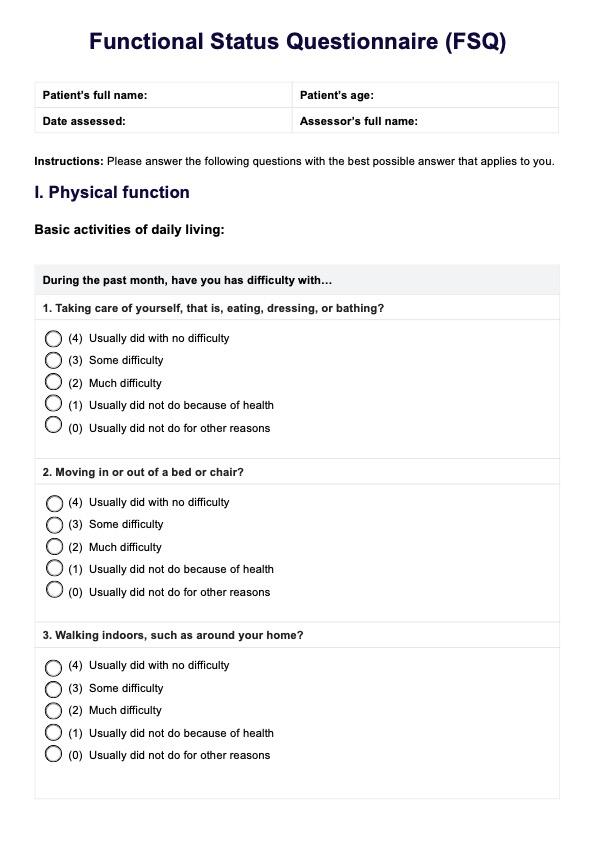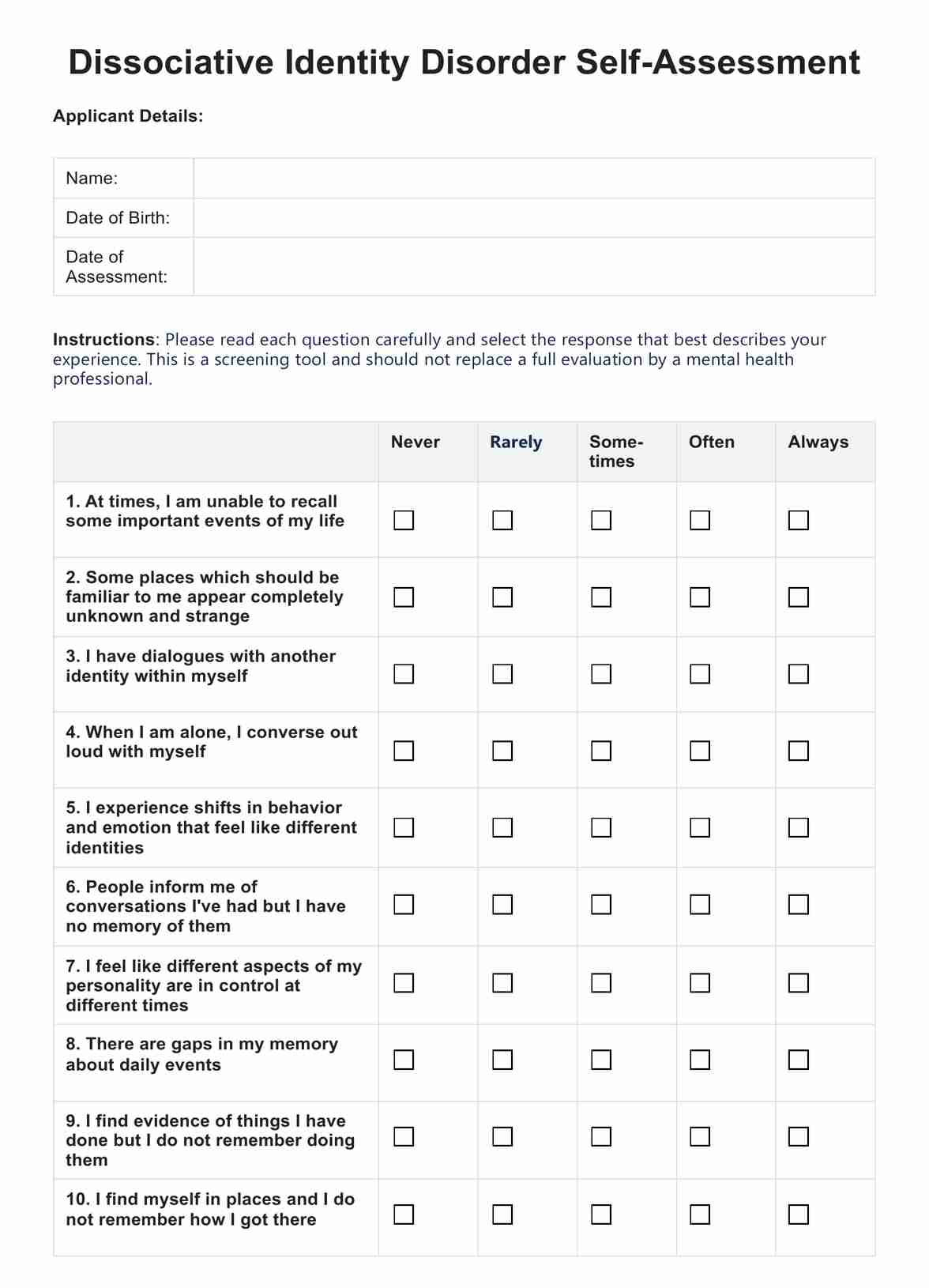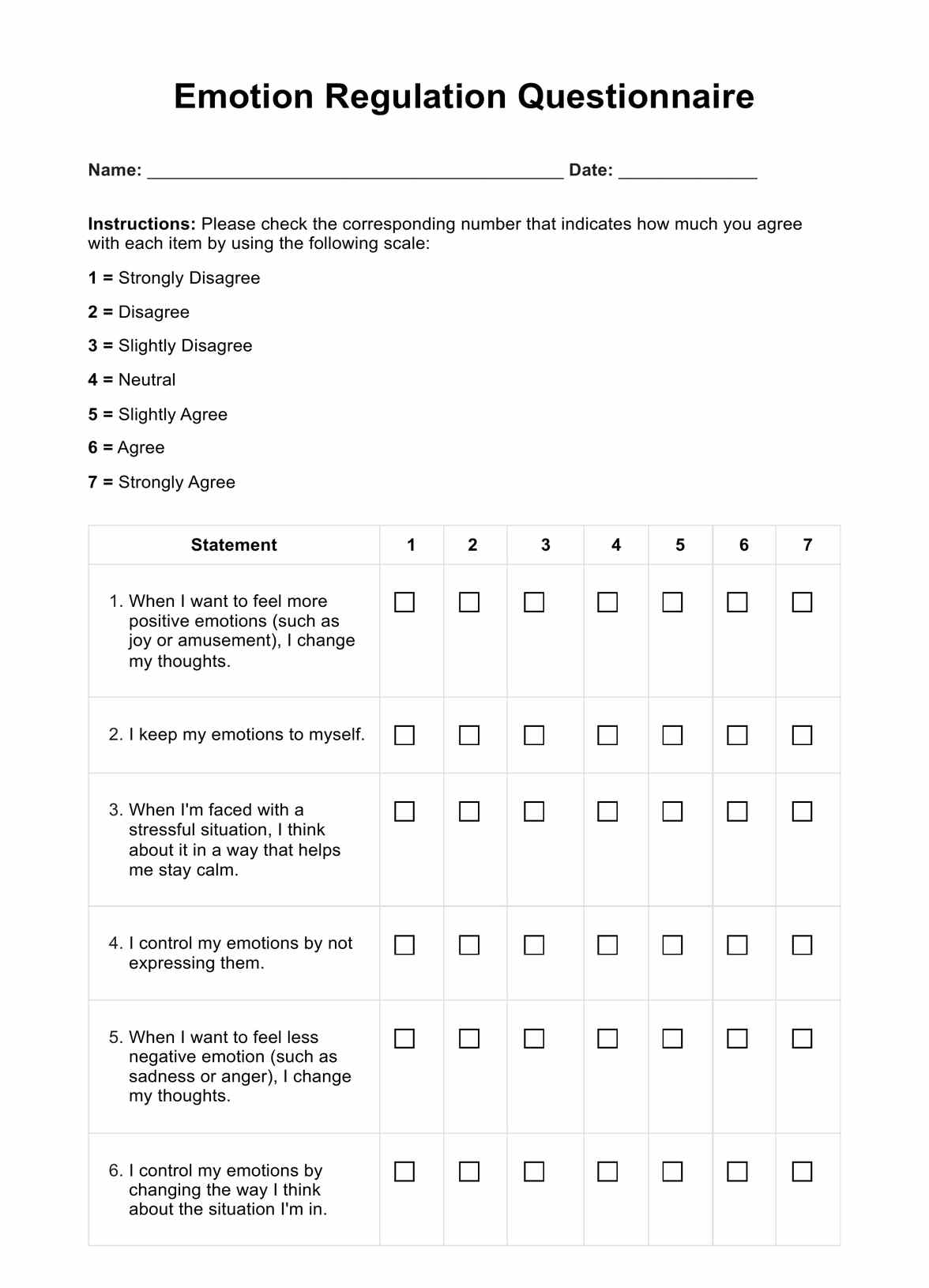ABC Scale
Issue the ABC Scale to assess an individual’s confidence in their own balance when doing certain activities that involve walking or maintaining balance.


What is the ABC Scale?
The Activities-specific Balance Confidence Scale or ABC Scale is a measuring tool used to assess how a person perceives their balance. It's a self-report scale, so the answers will be given by whoever is engaging with the scale.
The ABC Scale, developed in 1995 by L.E. Powell and A.M. Myers, aims to gauge individuals' confidence in performing ambulatory activities without fearing losing balance and falling. Participants assign a numerical value that reflects their level of certainty in their ability to complete these tasks successfully.
This measuring tool is primarily utilized for evaluating elderly individuals, patients undergoing rehabilitation following injuries, and those managing neurological conditions.
Healthcare professionals who incorporate this tool into their assessment repertoire utilize it to assess the impact of balance issues on their patients' ability and confidence to perform specific activities. The results obtained from these scales inform the need for additional assessments to evaluate patients and inform their treatment plans comprehensively.
If you are looking for other Balance Assessments, feel free to watch this video:
ABC Scale Template
ABC Scale Example
How to use the ABC Scale
The ABC Scale is a simple clinical tool that can be used in two ways:
- The healthcare professional using it can conduct an interview and ask the patient how confident they are when performing certain activities. The professional will simply mention one activity at a time and have the patient rate themselves.
This takes more time than the second option, but it allows the professional to ask the patient to expound on specific answers, especially if the self-ratings are low. This method also accounts for patients who cannot write because of certain conditions.
- If the patient can write, you can hand it to them so they can answer the scale independently. This is the quicker method because it can be completed within a few minutes, provided that the patient has a good idea of how confident they are when performing each item.
Either way, the patient will answer by rating each item from 0% to 100%. The choices are always increments of ten (e.g., 10%, 20%, 30%, and so on).
The scale's main question is: “How confident are you that you will not lose your balance or become unsteady when you…” and the items that follow it will complete it. Here are examples of what they will need to answer:
- …walk around the house?
- …stand on your tiptoes and reach for something above your head?
- …walk up or down a ramp?
- …are bumped into by people as you walk through the mall?
- …walk outside on icy sidewalks?
Beside each item is an empty box where they can write down their self-ratings.
To calculate the score, you simply need to add up the total score first, then divide it by 16, which is the total number of items on the scale.
To interpret the score, you just need to refer to the following:
- A score of 49% or lower means that they have a low level of physical functioning
- A score of 50% to 80% means that they have a moderate level of physical functioning
- A score of 81% or higher means that they have a high level of physical functioning
- A score of 67% or lower means they have a substantial risk of falling
When is it best to use the ABC Scale?
The Activities-Specific Balance Confidence Scale is most effective when assessing a patient's balance, particularly when they have experienced a recent fall.
Consider an elderly patient who, although not in a life-threatening condition, is now at a greater risk of falling. They feel frustrated with their current circumstances. Explain the ABC Scale and allow them to independently answer the questions if their motor skills allow, or conduct an interview-style assessment.
If the patient expands on their answers, combine this information with their score to create a personalized treatment plan that focuses on restoring their functional independence to a more favorable level.
In addition, the ABC Scale can complement other assessments that evaluate a patient's fall risk. By combining the results of these assessments with those of the ABC Scale, appropriate interventions and strategies for fall prevention can be determined and incorporated into the patient's treatment plan.
What are the benefits of using the ABC Scale?
Professionals can use it to assess the risk of patient falls
The ABC Scale was developed to assess an individual's confidence in maintaining balance and preventing falls during specific activities. To evaluate this, the scale relies on the patient's self-assessment.
Although this introduces subjectivity to the scale results, it is not inherently negative. In fact, it encourages active patient involvement in the assessment process, which holds great significance for healthcare professionals working with elderly patients, individuals in rehabilitation, and those with neurological conditions.
By considering how patients perceive themselves, healthcare professionals can create personalized care and treatment plans tailored to their specific needs.
It can help set rehabilitation goals
Healthcare professionals who utilize our template can leverage the additional comments box to encourage patients to elaborate on their self-ratings. While the ratings provide valuable insights for professionals to prioritize their focus, obtaining more nuanced patient answers can offer a deeper understanding.
These nuanced answers will aid in determining the functional goals that professionals and patients should concentrate on, enabling the development of the necessary treatments and interventions to facilitate goal achievement.
It can be used to monitor progress over time
You can reuse the ABC Scale during regular checkups. By frequently assessing your patient's self-ratings and observing increased confidence in performing specific activities, you can confidently conclude that your plan is effective and their recovery is progressing well.
However, if there is no improvement, it may be necessary to modify your plan and evaluate the impact of these adjustments.
Other tests for functional capacity
While the ABC Scale is an excellent tool for assessing self-perceived confidence in one’s balance, but other tests may provide a more objective measure of your patient's functional abilities. Here are other tests that you may consider incorporating into your assessment process for a more holistic evaluation:
Berg balance scale
The Berg Balance Scale is a commonly used clinical tool designed to assess balance in patients with balance impairments. This 14-item scale measures functional performance related to static and dynamic balance and has demonstrated strong measurement properties in various populations, including community-dwelling older adults and stroke patients.
Falls efficacy scale
The Falls Efficacy Scale (FES) is a self-report questionnaire that measures an individual's confidence in performing daily activities without losing balance or falling. It has been widely used in community-dwelling seniors and has shown good internal consistency, test-retest reliability, and ability to discriminate between individuals with different levels of balance confidence.
6-minute walk test
The 6-minute walk test is a simple and reliable tool for measuring functional capacity in active older adults. It assesses the maximum distance an individual can walk over a total of 6 minutes on a flat, hard surface. This test has been shown to have good reliability and validity in predicting cardiovascular fitness.
Timed up and go test
The Timed Up and Go is a widely used functional mobility assessment tool that measures the time it takes for an individual to rise from a chair, walk 3 meters, turn around, return to the chair, and sit down again. It has been found to have good psychometric properties in older adults with balance impairments.
The ABC Scale is great for self-perceived balance confidence, other tests like the Berg Balance Scale, Falls Efficacy Scale, Balance test, 6-minute walk test, and Timed Up and Go test provide objective measures. These templates help assess different aspects of balance and mobility for a more comprehensive evaluation.
Commonly asked questions
'Complete confidence' on the ABC Scale is when an individual feels 100% sure they will not lose balance or fall while performing different activities, from simple ones like standing up from a chair to more complex ones like walking outside on uneven surfaces.
The ABC Scale measures criterion validity by comparing its results with other recognized balance tests and measures. For instance, it might compare ABC scores with the results from the Berg Balance Scale or the Falls Efficacy Scale.
The overall score of the ABC Scale represents an individual's level of balance confidence. It is calculated by averaging all the scores from each activity on the scale, with a higher score indicating a greater sense of balance confidence. Following the cutoff scores, individuals can be classified into low, moderate, or high-balance confidence categories.
Some of the measurement properties assessed by the ABC Scale include internal consistency, test-retest reliability, and construct validity. These measurements ensure the scale is reliable and accurate in measuring an individual's balance confidence.


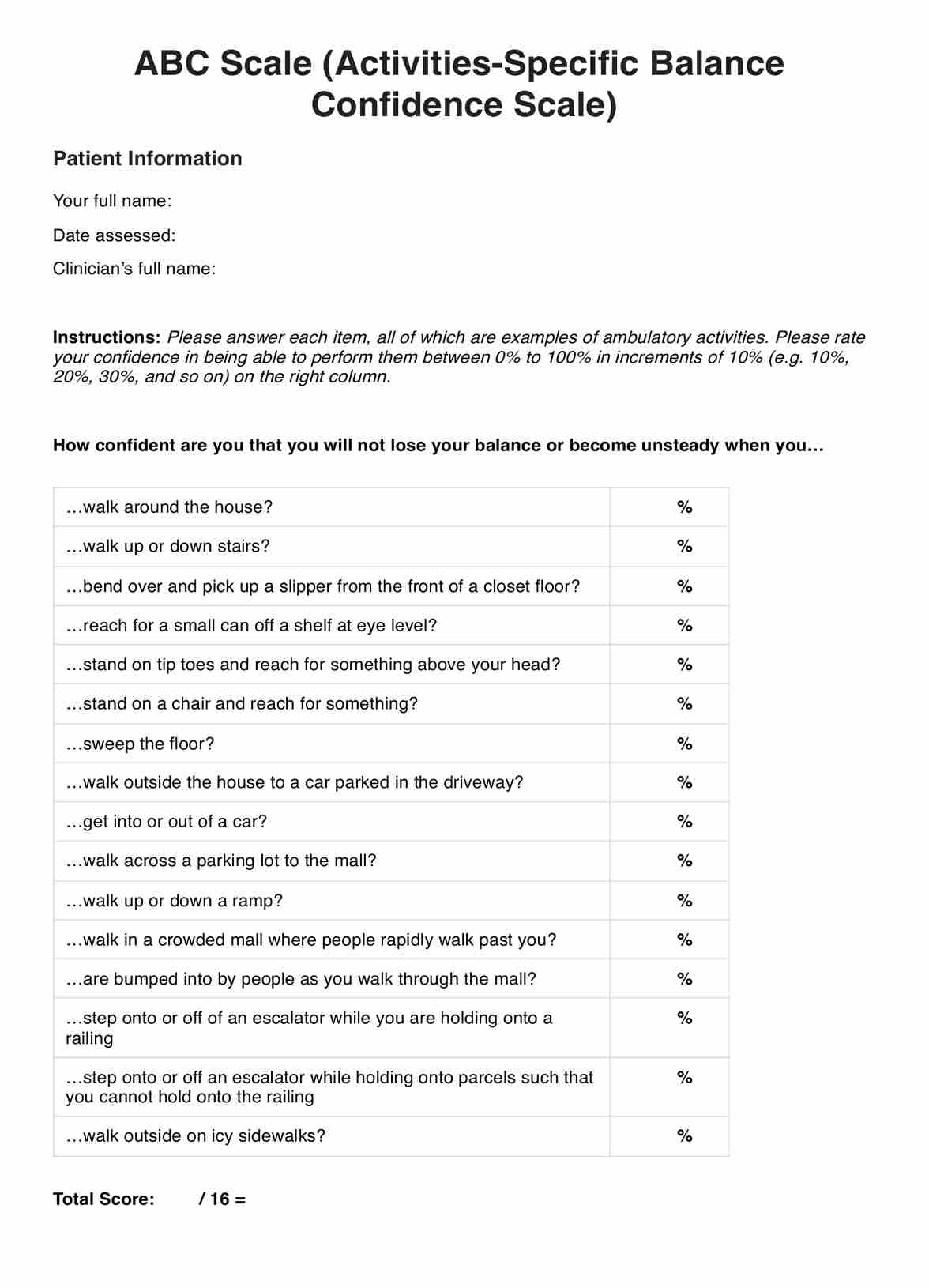
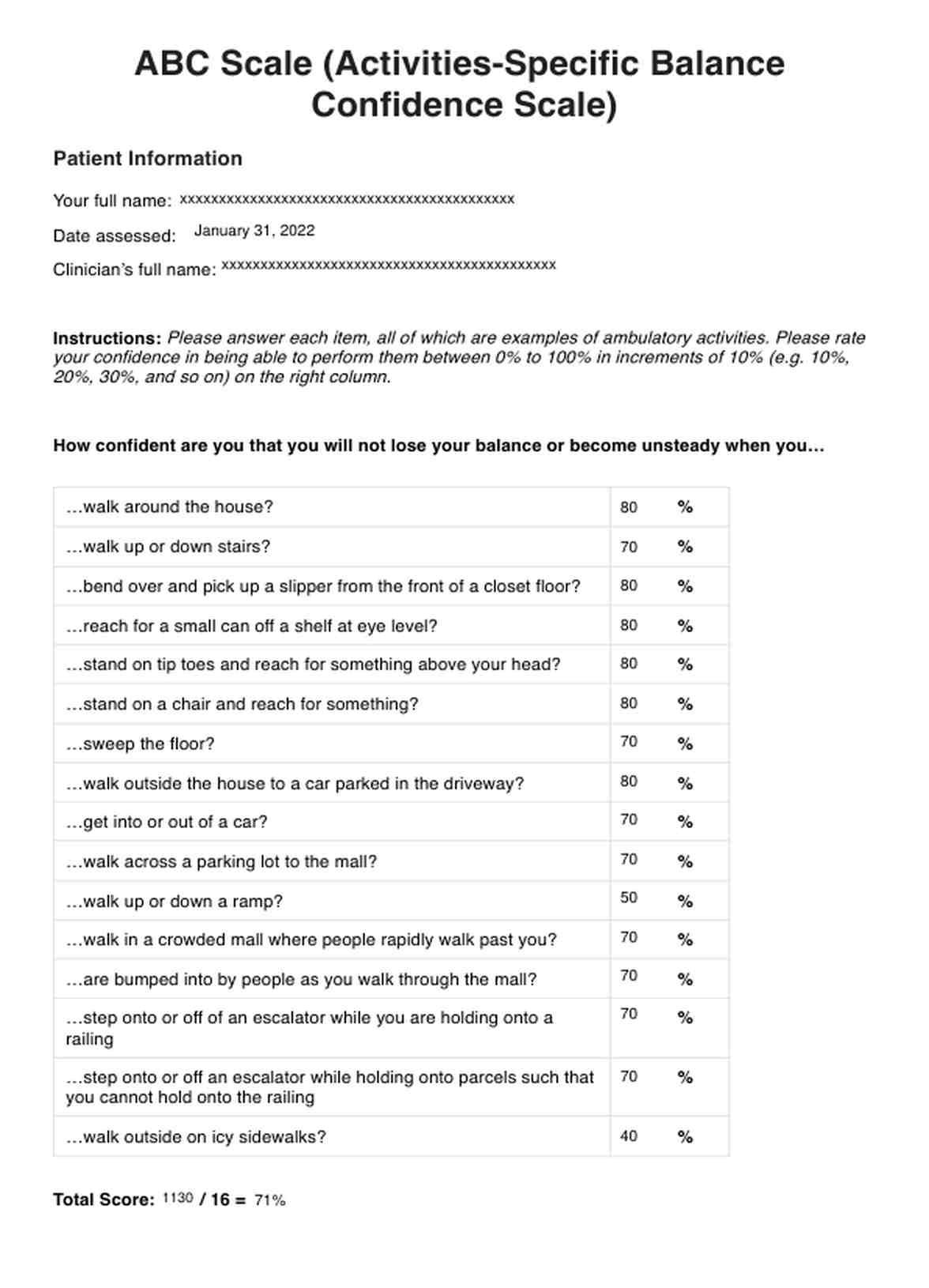

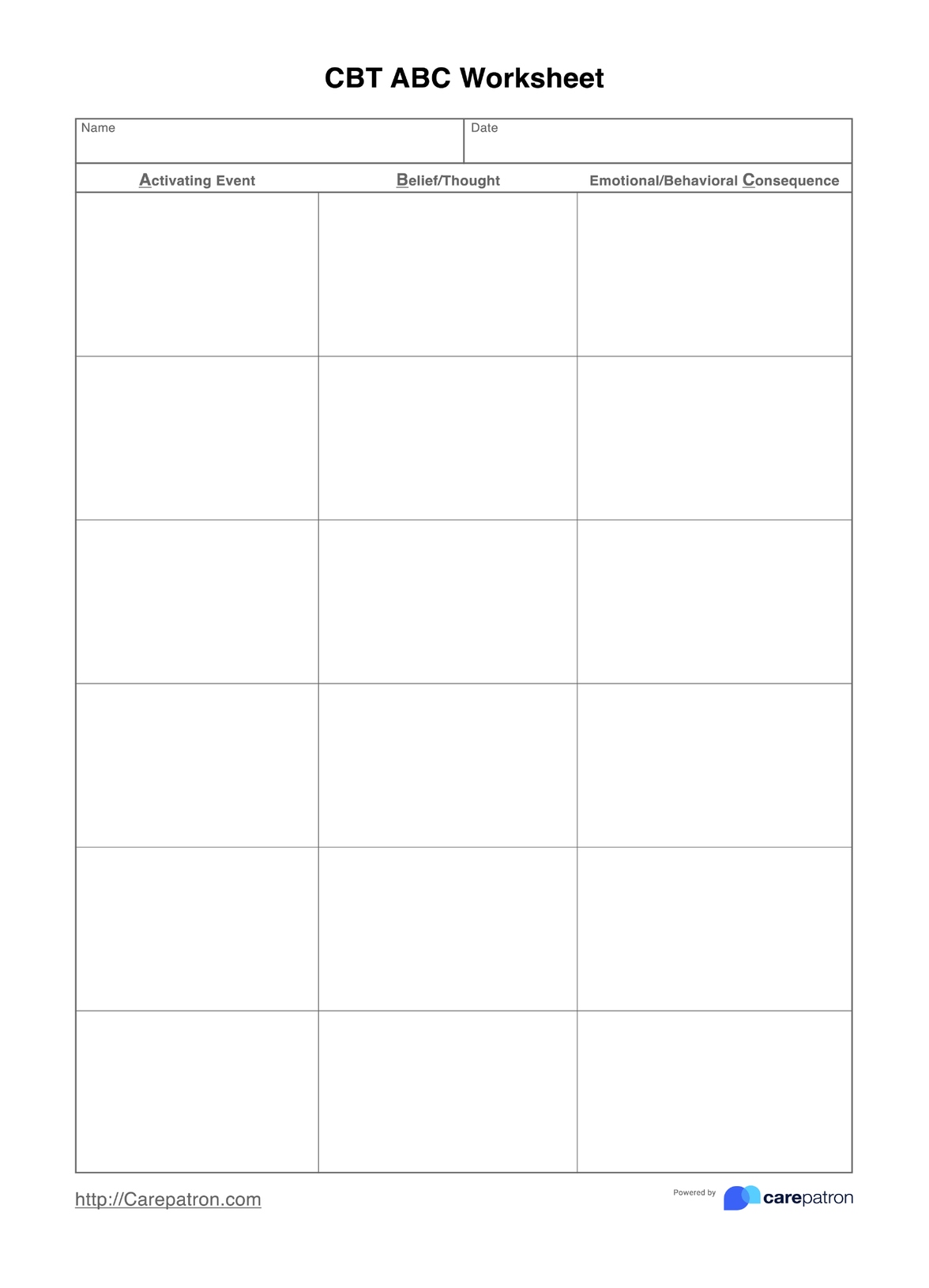

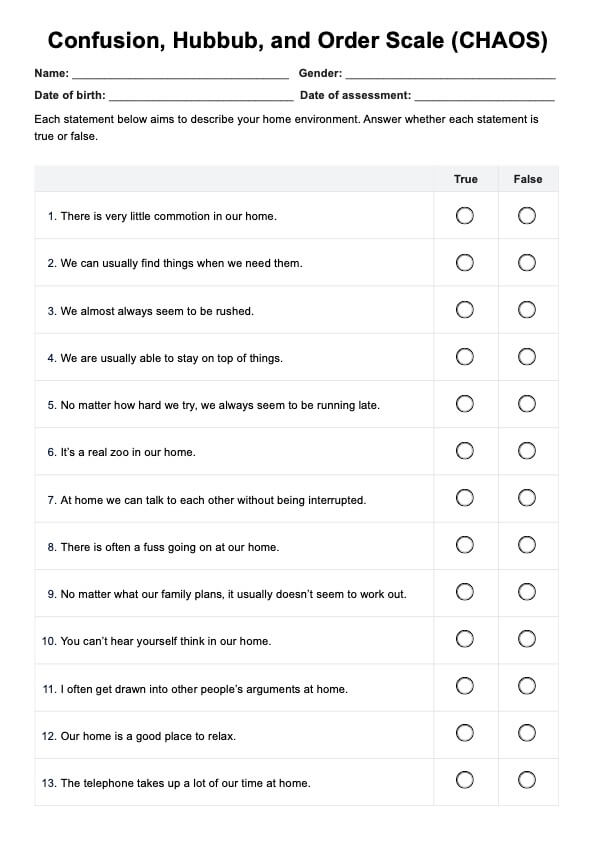














-template.jpg)


















































































